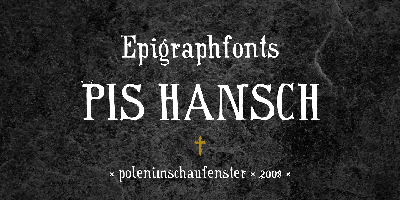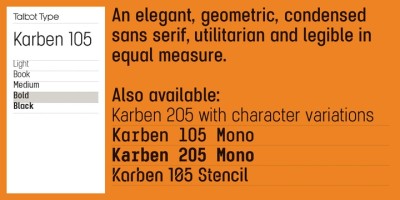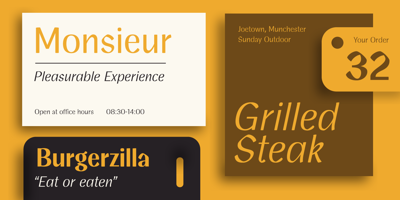Top Font Trends for 2026
Top Font Trends for 2026: What’s Hot in Typography
Fresh, Functional, and Future-Forward Fonts That Will Shape Design in 2026
Typography is always evolving. Each year brings a fresh wave of visual energy to branding, UI design, editorial layouts, and creative expression. As we step into 2026, designers are leaning into bold contrasts, organic curves, retro nostalgia, and hyper-modern aesthetics—sometimes all in the same project.
If you’re wondering what fonts will dominate digital spaces, print campaigns, and product packaging in 2026, this trend forecast is your essential guide.
Let’s explore the hottest font trends and standout typefaces that will define design this year.
1. Neo-Grotesque Sans-Serifs: Simplicity with Edge
Minimalism isn’t going anywhere—but in 2026, it’s wearing a slightly edgier suit.
Neo-grotesque fonts like Helvetica Now, Inter, and Neue Haas Grotesk are being used for clean, professional aesthetics. What’s changing? Designers are embracing ultra-thin weights, massive letter spacing, and asymmetrical layouts to make these classic fonts feel brand new.
Top picks:
-
Inter (Open Source)
-
Söhne by Klim Type Foundry
-
Helvetica Now by Monotype
Where it works: Tech startups, fintech, UX/UI, editorial websites
2. Organic and Handcrafted Fonts: Imperfect is Perfect
The digital world craves a human touch. In 2026, we’ll see a surge of fonts that look hand-drawn, slightly irregular, and full of character.
These fonts speak authenticity and warmth—perfect for eco-brands, wellness products, and artisanal businesses. Think subtle brush strokes, ink bleeds, or quirky ligatures.
Trending fonts:
-
Eczar (Google Fonts – elegant yet warm)
-
Pangram Pangram’s Canela Soft
-
Gistesy (for branding + packaging)
Where it works: Natural products, creative agencies, social media content, indie packaging
3. Futuristic Display Fonts: Sci-Fi Goes Mainstream
Thanks to AI, AR, and cyber-aesthetics, futuristic typography is making waves far beyond gaming and tech. Expect sleek, monospaced fonts with neon edges, geometric lines, and space-age energy.
Designers are using them for headlines, album covers, NFT branding, and even UI animations.
Hot choices for 2026:
-
Orbitron (Google Fonts – sci-fi vibe)
-
Neue Machina by Pangram Pangram
-
Ethnocentric
Where it works: Tech startups, fashion-forward brands, AI tools, entertainment industry
4. Retro Revival: Fonts from the ‘70s, ‘80s, and ‘90s
Nostalgia continues to trend hard in 2026. But instead of vintage overload, designers are reinterpreting retro fonts with modern color palettes and layouts.
Expect chunky serifs, disco-style curves, and digital-pixel fonts—often paired with gradients, grain textures, and bold contrast.
Fan favorites:
-
Cooper Black (iconic comeback!)
-
GT Super
-
Cormorant Garamond (Google Fonts – classy serif with retro DNA)
Where it works: Music, fashion, branding, creative campaigns
5. Smart Font Pairing: Bold Headline + Friendly Body
Rather than using one all-purpose font, 2026 favors intentional contrast:
→ A statement-making display font paired with a highly readable sans-serif body text.
This approach enhances readability while keeping things visually exciting.
Try these pairings:
-
Playfair Display + Inter
-
Bebas Neue + Open Sans
-
DM Serif Display + Work Sans
-
Montserrat + Lora
6. Multilingual and Inclusive Fonts
Global design requires global typography. Fonts with multi-language support, including Cyrillic, Arabic, Devanagari, and CJK scripts, are no longer niche—they’re must-haves.
Designers are also turning to accessible typefaces with built-in legibility for dyslexia or vision impairment.
Top multilingual fonts:
-
Noto Sans (Google Fonts – covers 1,000+ languages!)
-
Atkinson Hyperlegible (Braille Institute – designed for accessibility)
-
IBM Plex (modern and international)
Where it works: Corporate branding, government, education, NGOs, international UX
7. Variable Fonts: One File, Many Styles
2026 is the year of performance meets design. Variable fonts allow you to customize weight, width, slant, and optical size—all from a single font file.
That means faster load times for web, better responsiveness in mobile layouts, and more design flexibility than ever.
Popular variable fonts:
-
Roboto Flex (Google Fonts)
-
Recursive
-
Nunito Sans Variable
Why it matters: Speed, versatility, and creative control for developers and designers alike.
8. Color Fonts & SVG Type Experiments
While still emerging, color fonts and SVG-based typography are becoming more mainstream in motion graphics, social media design, and branding for Gen Z-heavy platforms like TikTok and Instagram.
Think multicolored characters, animated type, emoji-integrated fonts, or gradient-fill styles.
Where to try them:
-
Adobe Fonts (limited support)
-
Fontself (create your own!)
-
Color Fonts from ColorFonts.wtf
Final Takeaways: Design in 2026 is Bold, Smart, and Personal
The typography trends of 2026 are all about contrast:
-
Minimalism meets personality.
-
Retro meets future.
-
Technology meets human touch.
Whether you're building a brand, launching a campaign, designing a UI, or crafting a poster, the right font tells your story before words even begin.
Key Takeaways:
-
Choose fonts that reflect both your message and your audience.
-
Don’t be afraid to mix eras and styles.
-
Always check licenses, especially with premium or free-use typefaces.
-
Embrace variable fonts and font pairing tools for efficiency and creativity.
Looking for a font combo that matches your brand in 2026? I can help! Let’s find your visual voice together.



